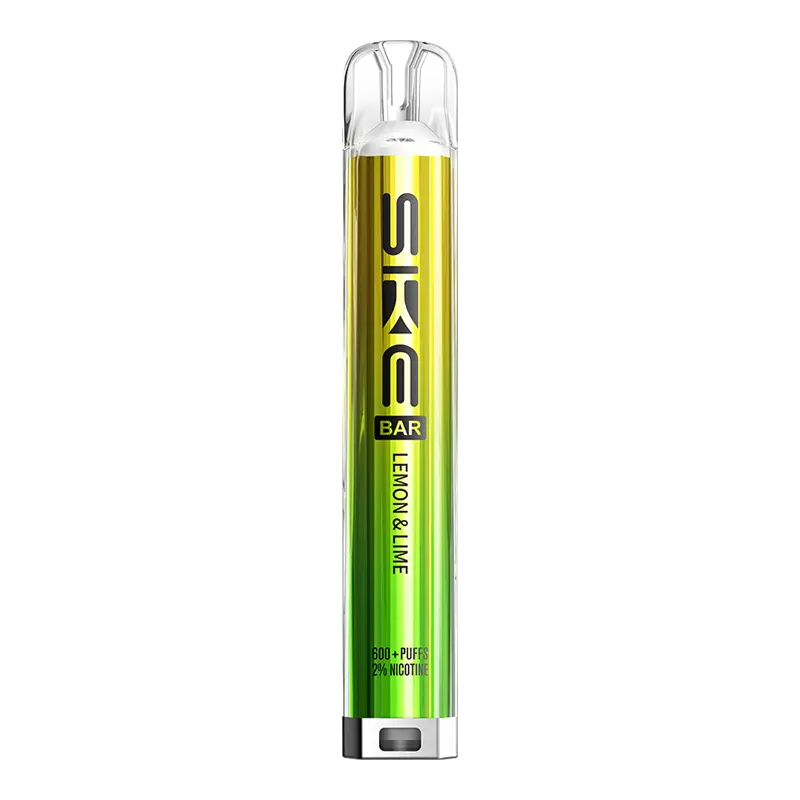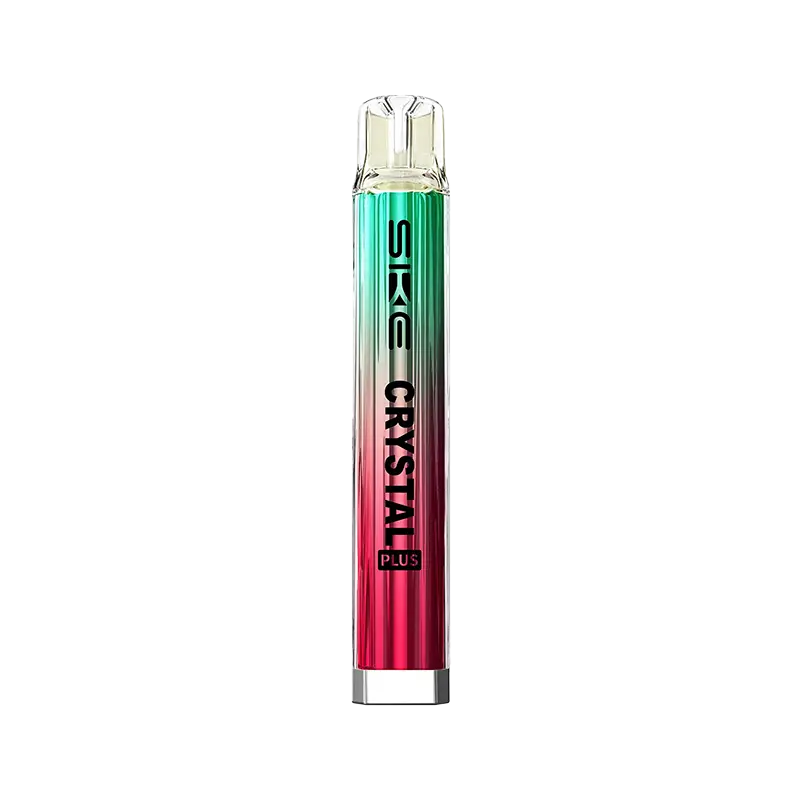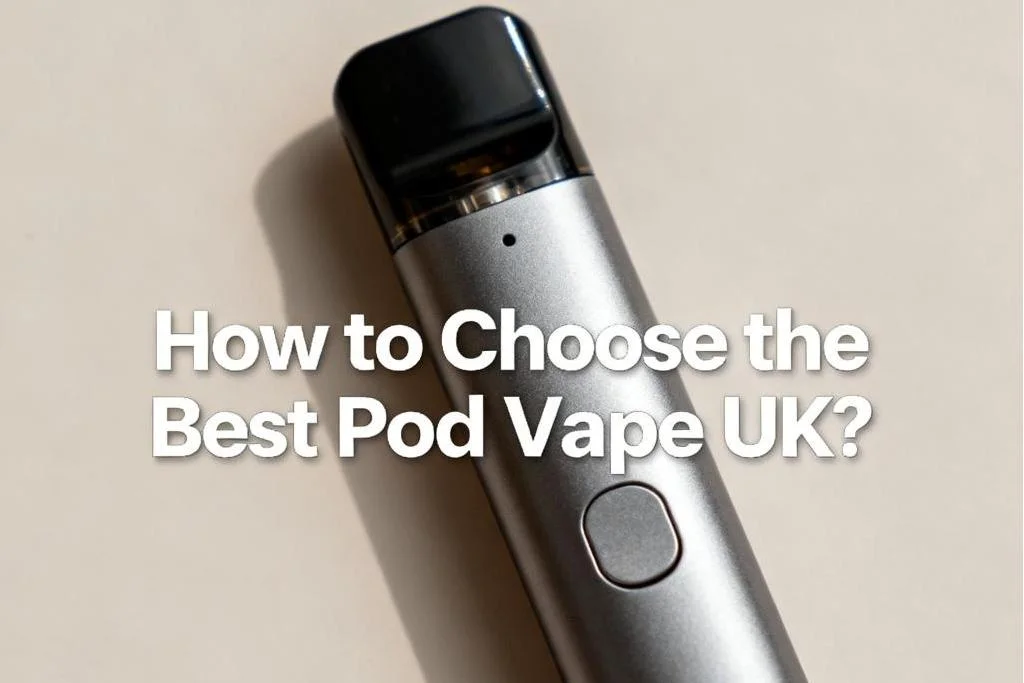Behind the Vapor: How is Vape Juice Made?
Ever pondered, "How is vape juice made"? You're in good company. This captivating query opens the door to a realm where chemistry blends with gustatory delight, birthing a dynamic blend that's redefined the traditional smoking experience. Vape juice, also known as e-liquid or e-juice, is the crucial component of any vaping device, transforming into a fragrant vapor when heated that vapers inhale. Throughout this article, we'll dissect each phase of the vape juice creation process, providing a thorough insight into the artisanal craft behind the clouds that many have come to relish.

What Raw Materials are in Vape Juice?
Base Liquids: Vegetable Glycerin and Propylene Glycol
At the core of every bottle of vape juice are two primary base liquids: Vegetable Glycerin (VG) and Propylene Glycol (PG). Vegetable glycerin, derived from vegetable oils, is a thick, sweet liquid known for its high viscosity. This characteristic is essential because it enables VG to generate thick, voluminous vapor clouds, greatly pleasing cloud chasers, while its gentle nature provides a softer throat hit, improving the overall smoothness of the vaping experience.
In contrast, Propylene Glycol is a thinner, petroleum-derived liquid that excels in flavor delivery. PG's effectiveness in delivering flavors is vital for creating the vibrant taste profiles vapers adore, and its pronounced throat hit, which mimics traditional smoking, is especially appealing to those transitioning from smoking to vaping. Meanwhile, PG's lower viscosity helps keep vaping devices clean by minimizing residue build-up.
Nicotine Content: Customizing Strength and Intake
Nicotine is a critical component in vape juice, particularly in formulations designed to deliver nicotine. Available in various nicotine strengths, it allows users to tailor their vaping experience to their nicotine preferences and needs. Whether sourced from tobacco plants or synthesized in laboratories, nicotine in vape juices is typically integrated into a high-purity liquid form, and then diluted to achieve the desired potency.
The Art of Flavoring: Creating Sensory Delights
Flavorings convert the neutral VG/PG base into an enticing sensory experience, using food-grade additives similar to those in the food and beverage industry to ensure safety and consistency. The process of flavor creation in vape juice is a complex art that blends various extracts to achieve precise and enjoyable taste profiles, offering endless possibilities from fruity concoctions to dessert-like flavors and traditional tobacco blends.
The precise combination of VG, PG, nicotine, and flavorings is what allows each bottle of vape juice to meet the diverse tastes and preferences of the vaping community, ensuring that every inhale is as enjoyable as it is memorable. This careful balance is essential for delivering the expected flavor intensity, throat hit, and cloud production that vapers seek.

How Is Vape Juice Made?
Creating vape juice is an intricate process that involves precise techniques and stringent quality control to ensure each batch meets the high expectations of vapers.
1. Ingredient Sourcing and Quality Checks:
The process starts with meticulously selecting high-quality ingredients, including vegetable glycerin (VG), propylene glycol (PG), nicotine, and food-grade flavorings. Each ingredient must pass rigorous quality assurance tests, including purity and safety checks. Suppliers are typically required to provide certificates of analysis (COAs) that confirm each ingredient's compliance with industry standards.
2. Mixing the Base Liquids:
The manufacturing process proceeds with preparing the base liquid, where VG and PG are measured and mixed in specific ratios customized for the desired vape juice formulation. The VG/PG ratio significantly impacts the viscosity of the liquid, directly affecting how smoothly the vapor is produced and inhaled. For instance, 70/30 VG/PG produces thick, dense vapor clouds and a smooth throat hit, ideal for cloud chasers. Conversely, 30/70 VG/PG, results in a thinner liquid that delivers more intense flavors and a stronger throat hit, closely mimicking the sensation of traditional smoking.
3. Nicotine Addition:
If the vape juice is intended to contain nicotine, it is precisely added to the base liquid at this stage. The concentration of nicotine is meticulously controlled to achieve the desired nicotine strength, which can range from 0 mg for nicotine-free options to high levels for strong formulations. This step involves using high-precision equipment to measure and mix the nicotine accurately, ensuring consistency and safety. Achieving uniform nicotine distribution across batches is critical, as even minor deviations can significantly impact the user experience and safety.

4. Flavor Infusion:
The subsequent phase, where flavorings are added, is where the artistry of vape juice manufacturing truly excels. Flavorists mix different extracts to craft complex flavor profiles, ranging from simple single-flavor e-juices to intricate multi-flavor combinations, with the type and amount of flavoring profoundly influencing the final taste and aroma.
5. Homogenization:
After combining all the ingredients, the mixture undergoes homogenization, a critical step to confirm the thorough blending of VG, PG, nicotine, and flavorings. Homogenization prevents the ingredients from separating, which is vital for maintaining consistency in flavor and nicotine delivery throughout the life of vape juice.
6. Steeping:
After mixing, the vape juice often undergoes a steeping process, akin to wine aging. During steeping, the mixed vape juice is stored for several days to several weeks, allowing flavors to meld and mature, resulting in a more rounded and cohesive taste.
7. Quality Control and Bottling:
The final step before packaging involves thorough quality control testing, where samples from each batch are evaluated for consistency in flavor, nicotine strength, and visual appearance. Once approved, the vape juice is bottled, labeled, and sealed in a cleanroom environment to prevent contamination.

How Is Liquid Nicotine Made?
Producing liquid nicotine entails a series of precise, controlled steps to extract and refine it for use in vape juice.
1. Tobacco Leaf Selection:
The process begins with selecting high-quality tobacco leaves, as the type of tobacco and its cultivation environment greatly impact the nicotine content and purity. Leaves should be carefully chosen based on their maturity and condition to warrant optimal extraction of nicotine.
2. Leaf Curing and Drying:
After harvesting, tobacco leaves are cured and dried using various methods — air curing, fire curing, sun curing, or flue curing — each affecting the leaf's chemical composition and nicotine content differently. Drying reduces the moisture content in the leaves, making them suitable for extraction.
3. Nicotine Extraction:
The dried leaves are then processed to extract nicotine, usually through a solvent extraction. Solvents such as ethanol, diethyl ether, or supercritical CO2 dissolve the nicotine from the leaf material, with the choice of solvent impacting the extraction efficiency and nicotine purity.
4. Purification:
The crude nicotine extract, which includes nicotine and other organic compounds from the tobacco leaves, undergoes a purification process to isolate the nicotine. Techniques such as distillation, filtration, and chromatography are employed to remove impurities and separate nicotine from other leaf compounds.
5. Concentration Adjustment:
Post-purification, the nicotine, now highly concentrated, must be diluted to appropriate levels for use in vape juices. It’s done by adding a carrier solvent, typically propylene glycol (PG) or vegetable glycerin (VG), which also serves as the base for the vape juice. The concentration of nicotine is adjusted to create different nicotine strengths, catering to the preferences and needs of various users.
6. Quality Control:
Samples are tested for purity, concentration, and overall quality to check the liquid nicotine meets regulatory standards and is safe for consumption. Tests typically include gas chromatography, mass spectrometry, and other analytical techniques to ensure the nicotine is free of impurities and contaminants.
7. Packaging for Distribution:
Once certified by quality control, the liquid nicotine is carefully packaged in airtight, light-resistant containers to prevent degradation, remaining potent and pure.

How to Make Flavor Extracts for Vaping?
The creation of flavor extracts for vaping is a sophisticated blend of art and science, crucial for determining the vape juice's final taste and appeal.
1. Selection of Raw Ingredients:
The initial step in making flavor extracts involves selecting high-quality raw ingredients, which can be natural, such as fruits, herbs, and spices, or synthetic to mimic various flavors. The choice of ingredients largely depends on the desired flavor profile, whether aiming for the freshness of mint, the tanginess of citrus, or the rich depth of vanilla.
2. Extraction Methods:
- Distillation: Used primarily for natural ingredients, this method involves heating the raw materials to release their essential oils into vapor, which is then condensed back into liquid form.
- Cold Pressing: This mechanical process is used to extract oils from citrus peels and other fruits without heat, preserving the freshness and vibrancy of the flavors.
- Solvent Extraction: A solvent dissolves flavorful compounds from the raw material, and after extraction, the solvent is typically removed by evaporation, leaving a concentrated flavor extract.
- Supercritical CO2 Extraction: An advanced technique that uses supercritical carbon dioxide as a solvent, which is highly efficient in producing very pure flavor extracts without the residue of traditional solvents.
3. Refinement and Concentration:
The extract undergoes refinement to remove impurities. It is then concentrated to intensify the flavor, making it suitable for vape juices where only a small amount is needed for the desired taste.
4. Blending and Formulation:
This step requires a skilled flavorist to combine different extracts in precise ratios to create complex and appealing flavor profiles. The formulation process also considers how flavors will interact with other components of vape juice, such as VG and PG.
5. Quality Control and Testing:
It includes sensory testing by expert panels, chemical analysis to confirm composition and purity, and stability testing to see how flavors perform under various conditions, to meet safety and quality standards.
6. Packaging and Storage:
Flavor extracts are typically stored in airtight, light-resistant containers to prevent degradation and preserve their aromatic and taste properties until mixed into vape juice.

In exploring "How is vape juice made," we've journeyed through the intricate processes that transform simple ingredients into the complex and enjoyable e-liquids used by vapers worldwide. Crafting vape juice combines science and art, with each component perfectly balanced to create a harmonious and satisfying vaping experience, enhancing your appreciation for each puff. As the vaping community continues to grow, so does the innovation in vape juice production, promising even more refined and enjoyable experiences in the future.
TABLE OF CONTENTS
- What Raw Materials are in Vape Juice?
- Base Liquids: Vegetable Glycerin and Propylene Glycol
- Nicotine Content: Customizing Strength and Intake
- The Art of Flavoring: Creating Sensory Delights
- How Is Vape Juice Made?
- 1. Ingredient Sourcing and Quality Checks:
- 2. Mixing the Base Liquids:
- 3. Nicotine Addition:
- 4. Flavor Infusion:
- 5. Homogenization:
- 6. Steeping:
- 7. Quality Control and Bottling:
- How Is Liquid Nicotine Made?
- 1. Tobacco Leaf Selection:
- 2. Leaf Curing and Drying:
- 3. Nicotine Extraction:
- 4. Purification:
- 5. Concentration Adjustment:
- 6. Quality Control:
- 7. Packaging for Distribution:
- How to Make Flavor Extracts for Vaping?
- 1. Selection of Raw Ingredients:
- 2. Extraction Methods:
- 3. Refinement and Concentration:
- 4. Blending and Formulation:
- 5. Quality Control and Testing:
- 6. Packaging and Storage:






















